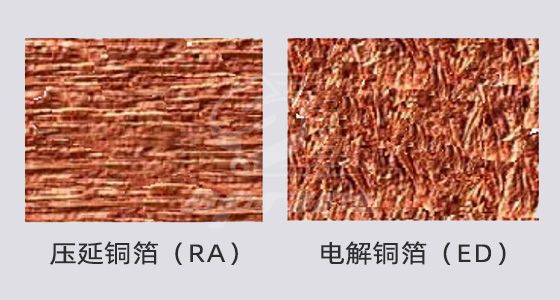Copper foil is a necessary material in circuit board manufacturing because it has many functions such as connection, conductivity, heat dissipation, and electromagnetic shielding. Its importance is self-evident. Today I will explain to you about rolled copper foil (RA) and The difference between electrolytic copper foil (ED) and the classification of PCB copper foil.
PCB copper foil is a conductive material used to connect electronic components on circuit boards. According to the manufacturing process and performance, PCB copper foil can be divided into two categories: rolled copper foil (RA) and electrolytic copper foil (ED).
Rolled copper foil is made of pure copper blanks through continuous rolling and compression. It has a smooth surface, low roughness and good electrical conductivity, and is suitable for high-frequency signal transmission. However, the cost of rolled copper foil is higher and the thickness range is limited, usually between 9-105 µm.
Electrolytic copper foil is obtained by electrolytic deposition processing on a copper plate. One side is smooth and one side is rough. The rough side is bonded to the substrate, while the smooth side is used for electroplating or etching. The advantages of electrolytic copper foil are its lower cost and wide range of thicknesses, usually between 5-400 µm. However, its surface roughness is high and its electrical conductivity is poor, making it unsuitable for high-frequency signal transmission.
Classification of PCB copper foil
In addition, according to the roughness of electrolytic copper foil, it can be further subdivided into the following types:
HTE (High Temperature Elongation): High-temperature elongation copper foil, mainly used in multi-layer circuit boards, has good high-temperature ductility and bonding strength, and the roughness is generally between 4-8 µm.
RTF (Reverse Treat Foil): Reverse treat copper foil, by adding a specific resin coating on the smooth side of the electrolytic copper foil to improve the adhesive performance and reduce the roughness. The roughness is generally between 2-4 µm.
ULP (Ultra Low Profile): Ultra-low profile copper foil, manufactured using a special electrolytic process, has extremely low surface roughness and is suitable for high-speed signal transmission. The roughness is generally between 1-2 µm.
HVLP (High Velocity Low Profile): High-speed low-profile copper foil. Based on ULP, it is manufactured by increasing the electrolysis speed. It has lower surface roughness and higher production efficiency. The roughness is generally between 0.5-1 µm. .
Post time: May-24-2024





